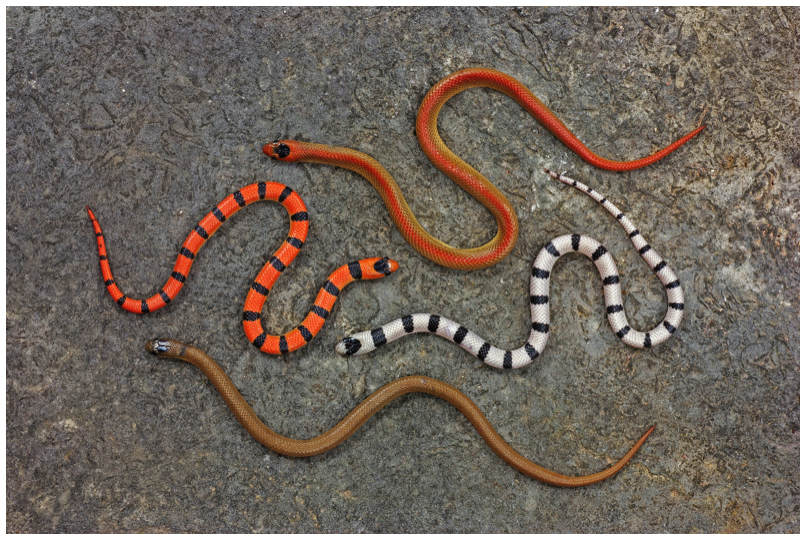Director of the Museum of Zoology; Associate Professor; Associate Curator
she/her
About
Academic background
I received my Ph.D. in Ecology and Evolutionary Biology from the University of California, Santa Cruz in 2009. I was a postdoctoral fellow in the Museum of Vertebrate Zoology at the University of California, Berkeley from 2009-2012.
Research Interests
As an evolutionary biologist and behavioral ecologist, I combine molecular, field, and laboratory studies to answer research questions in three main areas: (1) character evolution, phylogenetics, and ecological diversification (2) animal behavior and evolution, (3) the conservation and management of island endemics. Although much of my recent work has involved reptiles and amphibians, my research interests span a broad range of taxa.
Some of my current research projects include:
Color polymorphism and the evolution of mimicry
One of my primary research foci is on the origin and evolutionary stability of novel phenotypes in nature. Currently, I am using comparative genomics to test hypotheses about the role of color polymorphism in phenotypic evolution within Batesian and Müllerian mimicry systems. My main study systems include snakes across the Western Hemisphere, including the colubrid snake genus Sonora with varying levels of color polymorphism and mimicry of venomous coral snakes (see photo of four sympatric color morphs of Sonora semiannulata). Press coverage of some work: Global Michigan.

Integrated evolution of complex phenotypes
Covariation among traits underlies the evolution of most phenotypes in nature. However, different mechanisms generating covariance can produce the same patterns of macroevolutionary trait distribution across species, so the relative impacts of constraints and adaptive evolution in phenotypic change are often unclear. By leveraging independent evolutionary convergence of the same complex phenotypes in a comparative methods framework, my lab tests how ecological processes shape macroevolutionary patterns of trait evolution. We are especially interested in the intersection between behavioral phenotypes filmed before specimen preservation, morphological phenotypes generated from skeletal and soft-tissue CT scans, and genetic phenotypes from both transcriptomic and functional genomic analyses. See also our lab's NSF CAREER award on sensory innovation in snakes, and the recently completed oVert project on which we were a lead CT scanning institution.
Evolution of sociality
Another major component of my research examines 1) how social systems first arise in populations of solitary individuals and 2) how and why these nascent social systems may change over time. I have been investigating these questions in long-lived, viviparous lizards (Xantusia) inhabiting the deserts of the southwestern U.S. and Mexico. These lizards are highly, but facultatively, social, allowing for the rare comparison between social and solitary individuals within the same population. Within this system, I test both the mechanisms promoting sociality and the evolutionary, genetic, and ecological consequences of the transition to social behavior. Press coverage of some work: UCSC Science Communication feature and MSNBC.
Gene flow and population structure across disjunct distributions
The restricted distribution and isolation of island endemics, especially those with sensitive life history traits (long-lived, low reproductive rate), places them at risk for the detrimental effects of genetic drift and reduced genetic variation. However, this isolation often leads to unique phenotypes or genetic diversity of conservation interest to environmental management agencies. In collaboration with multiple academic institutions, the Bureau of Land Management, and the United States Navy, I have investigated genetic diversity and effective population size, gene flow and population substructure, and population stability in several island systems.
Research Areas
- Evolution of behavior, evolutionary genomics, trait evolution and phylogenetics, herpetology
Affiliations
Graduate Students
- Natasha Stepanova
- Andressa Viol
- Kaori Chambers
- Riley Stanton
Postdoctoral Fellows


